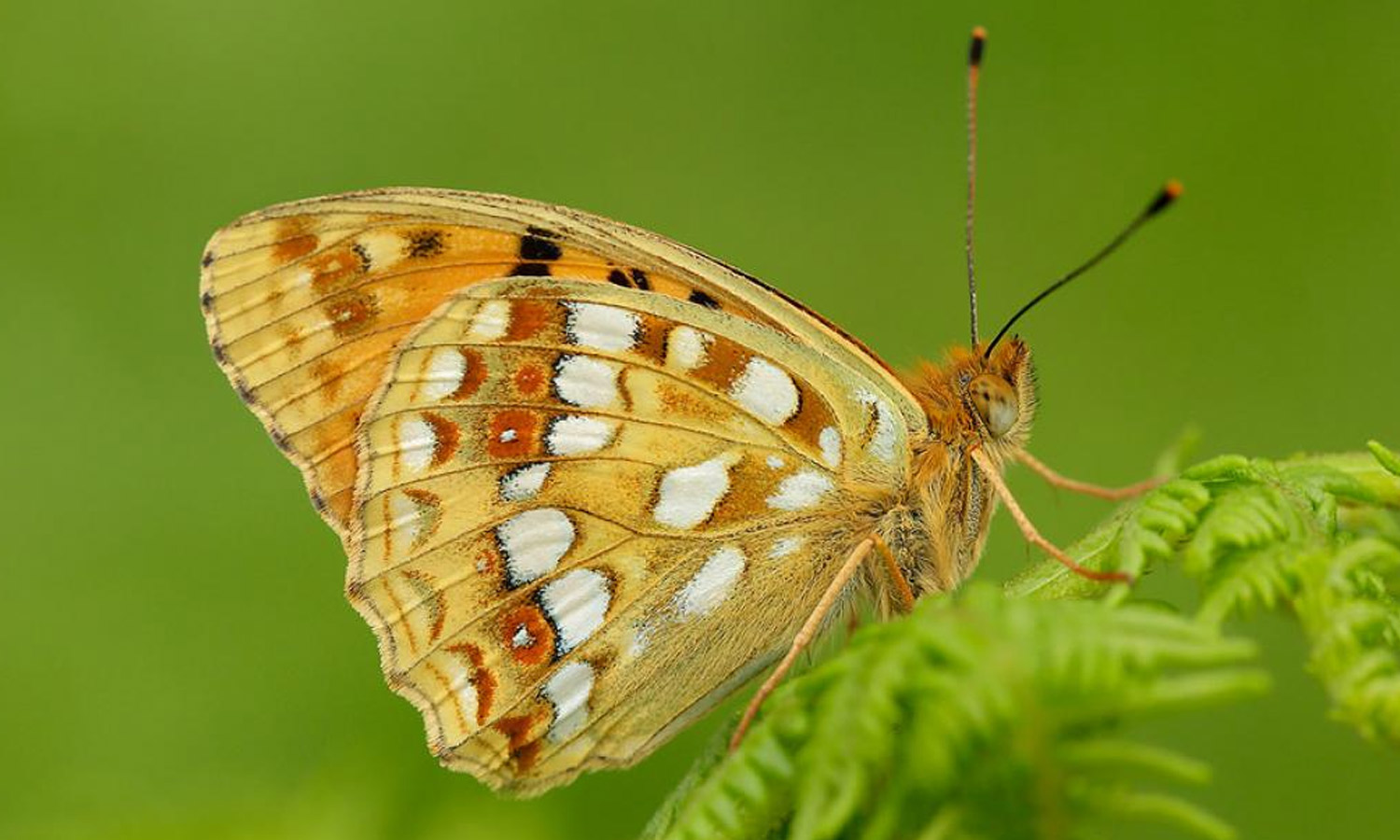Each month we’ll be finding out more about a species of butterfly or moth.
This month, we’ll be meeting the High Brown Fritillary.
Common name: High Brown Fritillary
Scientific name: Fabriciana adippe
Size: Its wingspan is 60-67mm
When does it fly: Between mid-June and late July
Where does it like to live: This swift butterfly likes darting over grassland slopes with Bracken and scrubby vegetation next to woodlands and limestone outcrops, looking for flowers like thistles and Bramble to nectar on.
Where you can see it: The High Brown Fritillary has sadly seen a dramatic decline since the 1950s. Once occurring across woodlands in England and Wales, this butterfly is now restricted to a few locations in North West and South West England and South Wales.
Amazing fact: High Brown Fritillary caterpillars love to sunbathe, basking in the sun raises the caterpillars’ body temperatures and helps them when they’re growing in the spring! When the female is laying eggs, she needs to pick out the best sunbathing spots for her offspring when they emerge the following spring.
“I love the powerful flight of the High Brown Fritillary – a streak of vibrant orange darting past and then it’s gone!” – Cy Grove, Individual Giving Manager
The High Brown Fritillary is a striking and speedy bright orange butterfly with beautiful black patterning. In flight, it looks very similar to the Dark Green Fritillary and challenging to tell apart, but for those who are a fan of spot the difference, a closer inspection of one that has landed (usually to nectar on Bramble) can help you tell them apart.
- The High Brown Fritillary (left) has orange-ringed pearls on the underside of its hindwing whereas the underside of the Dark Green Fritillary (right) is olive green.
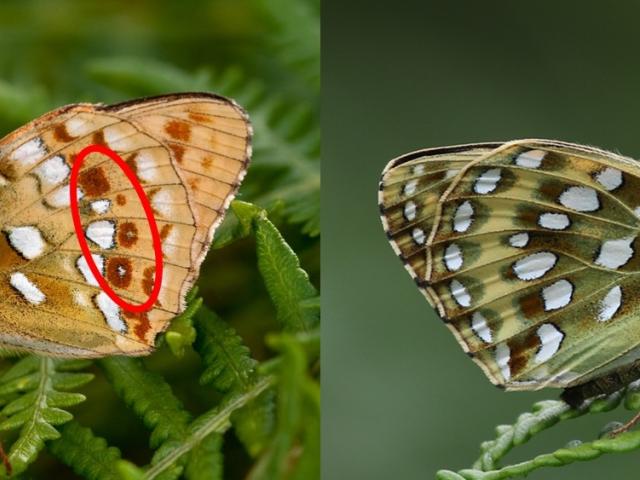
- In the first row of dots on the upperside of the forewing of the High Brown Fritillary (left), the third dot from the outside edge is indented. On the Dark Green Fritillary (right), they’re in line.
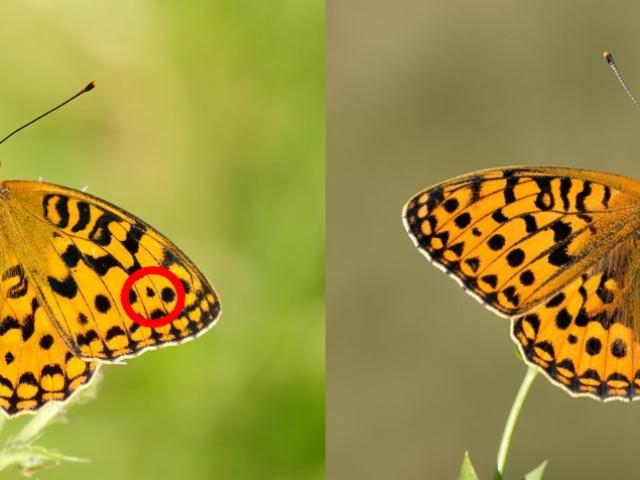
When searching for a potential mate, the males will patrol large areas of their habitat and check out any likely-looking brown objects to see if they’re a female. When they eventually find a receptive female butterfly (and not just a particularly convincing leaf) they will mate, usually coupling up for about an hour, then go their separate ways.
A female ready to lay her eggs can often be spotted fluttering low over the ground in search of the caterpillar’s foodplant, usually Common Dog-violet, during July. She can sometimes be a bit picky when choosing her egg-laying spot, searching for a dead frond of Bracken or twig which won’t rot in the winter, near to a buffet of violets for her young caterpillars, and in a good area for them to bask in the sunshine. When the eggs are laid, however, they will stay that way until the following March when the caterpillars hatch.
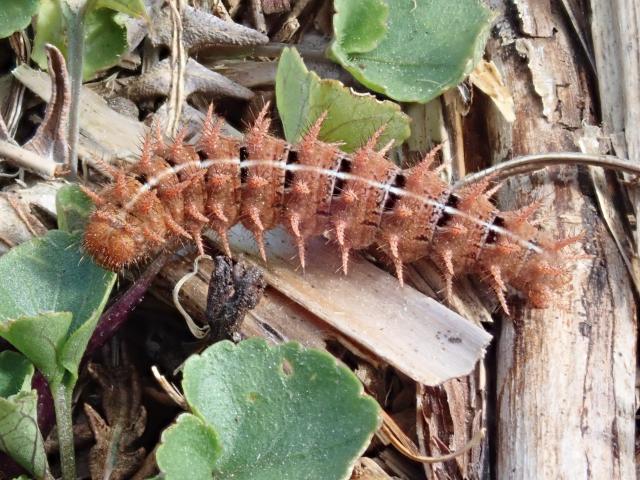
The caterpillar of the High Brown Fritillary looks like a forest in miniature, with small tree-like protrusions all over its body. This clever camouflage helps it blend in with surrounding vegetation, particularly dead Bracken fronds, which is a favourite egg-laying spot for the High Brown Fritillary.
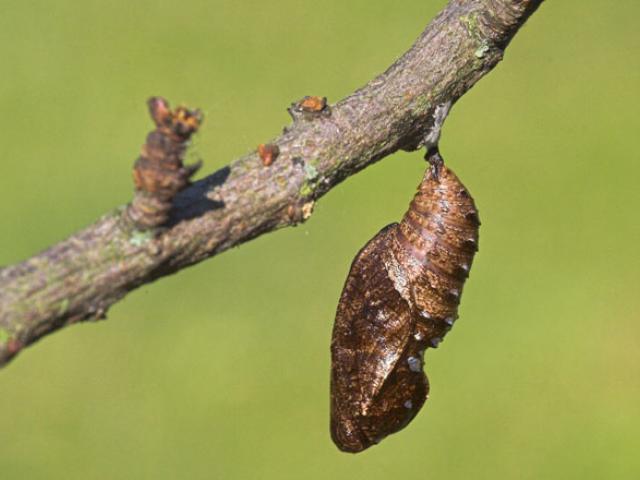
When ready to pupate, the High Brown Fritillary caterpillar will form a chrysalis, the colour of a dead leaf with silver points that resemble water droplets. It takes a few weeks for the adult to then emerge and begin the cycle again.
Sadly, numbers of the High Brown Fritillary have fallen by 65% in the last 40 years. But Butterfly Conservation and its partners are working hard to help protect existing populations and help them thrive again.
Butterfly Conservation is part of Wales’s flagship Green Recovery project Natur am Byth! where we are taking the lead in conservation efforts for the High Brown Fritillary in the Vale of Glamorgan.
Butterfly Conservation is also carrying out vital work in Heddon Valley in Devon, to help the High Brown Fritillary populations there – find out more about the work and how you can help! Creating a future for the High Brown Fritillary - JustGiving


